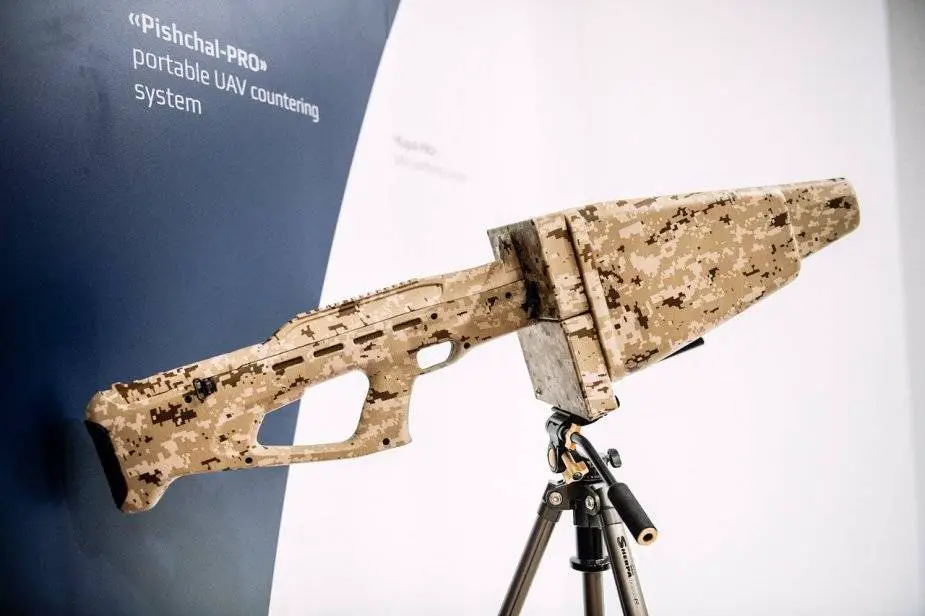There is a search for new methods to fight air targets triggered by a rapid development of drones, which pose a major danger to the warring parties and numerous economic, infrastructure objects and mass events in peacetime, Colonel PhD Military Science V. Tikshaev and Retired Lieutenant-General PhD Military Science V. Barvinenko write in the Military Thought magazine.
Follow Army Recognition on Google News at this link

Pishchal-PRO anti-drone system (Picture source: Rostec)
The Syrian experience of fighting mini and micro drones demanded to upgrade radars and Pantsir missile-gun systems, as well as EW, which detects and jams drone control radio networks and makes them fall. Some drones can be intercepted and landed. It was confirmed in Syria.
It makes it necessary to operate a big number of cheap and effective weapons against mini and micro drones, which do not demand a lot of highly-skilled operators. It made many countries, including Russia, design various methods to fight drones, suppress them and destroy.
The main research guideline aims at creating specialized radio reconnaissance means and jammers of drone navigation channels. The operational drones and information about them was available in various formats from 2015 at Interpolitex, MAKS shows, Advanced Law Enforcing Technologies Day, and Army forum.
Practically all specialized counterdrone weapons in Russia are created by defense enterprises. They initiate the design and hope to find customers. It determines the creation of tools based on the same principles and close in characteristics.
Mobile multirole counterdrone Sapsan-PRO system jams radio signals of navigational, communication and control systems in a radius of 12 km. Stationary Kupol, Rubezh-Avtomatika and Taran-PRO operate in a radius of 1.5 km. Sapsan-Bekas and Repellent have a radius of 15 km.
Portable electromagnetic guns REX 1 and Pishchal-PRO operate in a range of 2 kilometers in the limits of optical visibility. SERP system can detect small drones in city conditions and jam their control channels at a distance of 20 km.
Solaris-N automatic system with artificial intelligence has been designed to protect major territories against drones. It can jam drones on a space of 80 km².
Cheremukha radio monitoring system detects drones and calculates the location of their control posts. Many objects are already protected against drones by Strizh, Skvorets, Garpun, Solovei, Snegir and other systems. The experience of fighting small drones shows that jammers should be the main weapon against swarms of drones.
Other guidelines include the creation of antidrones with nets, laser, beam, and sound means and software. Antidrones are drones with weapons, including explosives, which blast off when a hostile drone is approached. They can be engaged solo or in a swarm. In Russia, such antidrones include reusable unmanned vehicle Vepr-12 armed with a carbine or Kalashnikov rifle. Ordinary nets of thin fiber are effective against drones.
Russia has designed Karnivora reusable unmanned vehicle with a net to catch hostile drones. Counterdrone laser weapons for warships and land forces can be designed on the basis of Peresvet system.
Sound and software counteraction tools are created. The sound impact on gyroscopes destroys drones if resonating frequencies coincide. South Korea has created such a craft. Software tools intercept drone control. The use of electromagnetic systems to destroy drones by a powerful impulse is being considered.
© Copyright 2021 TASS / Army Recognition Group SPRL . All rights reserved. This material may not be published, broadcast, rewritten or redistributed.















